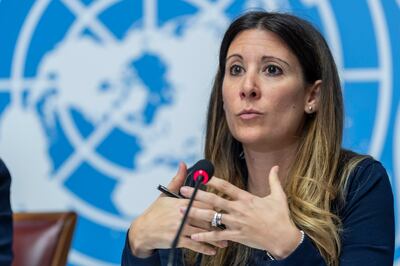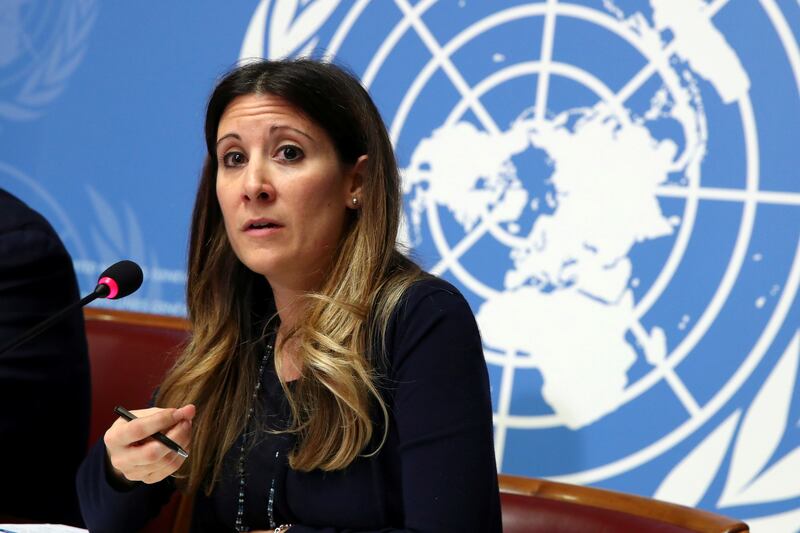Disinformation is continuing to hamper the fight against Covid-19, a World Health Organisation expert has warned, as the planet approaches the third anniversary of a pandemic being declared.
Dr Maria Van Kerkhove, technical lead for the Covid-19 response in the WHO Health Emergencies programme, also said the real death toll from the coronavirus was likely to be three times the official figure.
Online “anti-vax” comments and conspiracy theories are still prevalent in many countries and have sometimes resulted in vaccine hesitancy, which remains a problem even though Covid-19 jabs are credited with saving large numbers of lives.
“Disinformation is rampant these days and it’s undermining the safe and effective tools that can reduce the impact of Covid-19,” Dr Van Kerkhove said during a WHO online briefing session.
The WHO emphasised the continuing importance of vaccination. Individuals in high-risk groups are advised to ensure they have a recent booster, ideally between four and six months after their last.
Dr Van Kerkhove warned that it could sometimes be difficult to get people engaged in dealing with Covid-19, nearly three years on from when the pandemic was declared.
“We’re in a challenging phase. No one wants to talk about Covid any more. We all want it to be over,” she said.
“We must remain vigilant. We cannot become complacent … We need governments to be focused on this.”
The hope is that the “emergency” of Covid-19 will end this year, she said, and the world will have reached a more stable way of dealing with the virus.
Vaccines with more protection
It was in December 2019 that the authorities in Wuhan, China reported a cluster of cases of pneumonia in people who had the disease later named as Covid-19.
The genetic sequence of the coronavirus that causes the disease was publicly shared on January 12, 2020, leading to a race by scientists across the globe to develop vaccines.
A notable aspect of the pandemic has been the success of messenger RNA (mRNA) vaccines, a type of technology that had not previously been deployed on a large scale to protect people from disease.

Dr Van Kerkhove emphasised that even people who had been infected with Covid-19, and so would be expected to have some natural immunity, should be vaccinated.
“We’re seeing a really robust immune response [to vaccination] and a hybrid immune response for people who have been infected and vaccinated,” she said.
Another WHO expert, Dr Sylvie Briand, the organisation’s director for epidemic and pandemic prevention and preparedness, said that vaccines stimulating broader immune protection were on the horizon.
In addition to bivalent vaccines, which typically are formulated to be effective against the original form of the coronavirus and a later variant, there would be multivalent vaccines protective against larger numbers of variants.
“The acute phase of the pandemic is ending, but this phase of transition is very complex,” she said. “Now, three years later, most of the population on the planet has immunity, either through vaccination or acquired through infection.
“Since Omicron, the trend we’ve observed is that the virus becomes more transmissible but less virulent. We hope this trend continues.”
Three times higher
Between 10,000 and 40,000 deaths each week from Covid-19 are being reported to WHO, Dr Van Kerkhove said, with more than 200,000 deaths since the beginning of December.
“At present, cumulatively, we’ve had more than 6.8 million deaths, but we know that the [actual] number is more than three times higher,” she said.
The number of deaths underestimates the pandemic’s true impact, she said, because it excluded an increase in the numbers who have died or who will die, for example, because cancer has gone undiagnosed as a result of disruption to health services.
There is some evidence from temperate countries that transmission of the virus increases during winter, as people spend more time indoors, the webinar heard.
Scientists are still monitoring the types of coronavirus that are circulating and more than 600 sub-lineages of the highly transmissible Omicron variant have been identified.
All have to be analysed, with particular attention paid to those that appear to have a growth advantage and so are likely to spread most widely.
Dr Lorenzo Subissi, technical officer for emerging zoonotic diseases at the WHO Health Emergencies programme, said that there was “huge heterogeneity” in which sub-variant was dominant from one location to the next.
While there is no current evidence that the virus is becoming more virulent, with the various Omicron sub-lineages that are dominant tending to be less dangerous than earlier forms, there is no guarantee this would not happen.
“The virus has not stabilised to a predictable pattern of evolution,” Dr Subissi said. “There’s no real certainty on the change of severity. It could become less severe, we hope so, but we could have a more severe variant.”






